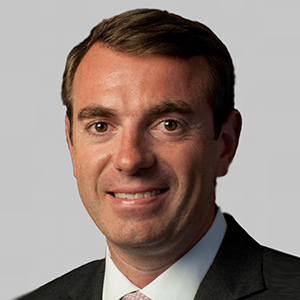
Ares Global Credit Monitor - Third Quarter 2025
Puzzle Pieces Coming Together
Headlines day-to-day remain loud and volatile, but global equity and debt markets continue to navigate the noise, with equity markets near record levels, led by the Magnificent Seven and credit spreads remaining near historical tights across the credit spectrum in the last quarter.
The medium-term outlook looks clearer for now and is an improvement over the second quarter. This has resulted in Mergers & Acquisitions (M&A) activity picking up in the last few months (up 29% by value year-to-date through the end of August1).
However, the market remains well off the record 2021 M&A levels and global credit activity remains more heavily weighted to refinancings instead of new-money deals. While the equity market and private and public credit markets are firmly open for business, and private equity and corporates are keen to transact, it’s been the Initial Public Offering (IPO) market that has been muted until recently. Interestingly, in the last two months we have seen a material step-up in activity, particularly in the U.S. and parts of Asia, which could be the key catalyst to properly unlock M&A and create further credit opportunities more broadly.
But is it all positive? From a credit-risk perspective, we believe we should remain focused on the broader health of global economies while also balancing that with our bottom-up analysis, specifically the state of job markets, inflation, and what that means for the interest rate outlook (which are likely to be unsynchronized globally, presenting additional considerations). Looking at the S&P 500 and EURO STOXX 50’s second quarter earnings results, over 75% of companies reported as in line with or ahead of expectations.
That said, the impact of tariffs was always going to take a while to be felt given the amount of activity experienced in the lead-up to implementation. The real impact is likely to start being felt in the next couple of quarters, and while the U.S. administration’s next steps continue to be uncertain, the early expectation of pro-business legislation seems to be coming through. Meanwhile, potential escalation of geopolitical risks continues to be an area of focus, but to date has had limited direct impact on global credit markets.
What Does This Mean for Credit Spreads?
Digging a bit deeper, what does a rate-cutting U.S. Federal Reserve Board (the Fed) mean for credit spreads? History is likely a good guide, with Bank of America recently having completed some interesting analysis on credit spreads largely being correlated when the Fed cuts rates after a pause at current levels for at least six months. For investment-grade markets, we have seen this occur in all instances since 2002, with last year seeing a particularly strong decrease in spreads. High-yield cash markets have also reacted similarly in the past, with last year witnessing a spread rally in line with historical averages. As with equities, credit markets tend to rally ahead of the event as well as after.
Change in U.S. IG Bond Spreads (bps) Following Initial Rate Cut
Change in U.S. High-Yield Bond Spreads (bps) Following Initial Rate Cut
Source: Bloomberg, Bank of America, Fed ‘first cuts’ after 6M+ holds.
The ever-impending M&A wave seems to be close, but we have been waiting for it for at least two years. Why is now different? The increase in interest rates over the last couple of years appears to be coming to an end. If you separate that out from all other news and data points, it is likely to be a major catalyst for activity.
Look no further than the clear link in M&A activity relative to the move in base rates since the Great Financial Crisis. There are real signs that the market is thawing in recent months, with Silver Lake and co-investors looking to take Electronic Arts private for US$55bn (which would be the largest leveraged buyout, or LBO, of all-time), and in Europe Thoma Bravo is acquiring Dayforce for US$12bn with a $5 billion broadly syndicated loan underwrite (the largest LBO in Europe in many years).
EA Buyout Would Be Largest LBO Ever
Source: Bloomberg and Mergermarket
Looking back at the last 25 years, periods with high interest rates also resulted in less private equity fundraising and companies more generally being hesitant to invest. During those windows, the companies and private equity firms that saw good opportunities early in the base-rate reduction windows often saw outsized returns and strong fund vintages. It will be interesting to see if this cycle looks the same.
U.S. M&A Volumes ($) and Base Rate Over Time
Source: Bloomberg and Mergermarket
U.S.
This past quarter, the Fed made its first cut since 2024 in a “risk-management” exercise, weighing the risks of a weaker job market against potential inflation with the backdrop of an above-neutral interest rate. Ultimately, the Fed is treating any potential tariff-driven inflation as a one-time adjustment to the price level and instead focusing on the jobs market. The jobs market has seen less creation—only 27k jobs on average over the past four months—and is now in balance after years of excess supply. Unemployment has ticked up, but remains at low levels overall as declining immigration rates reduce the number of new jobs needed each month. We have yet to see a meaningful contribution to core inflation from tariffs—while goods prices have increased, the amount, and weight of the category are not large enough to have a meaningful impact on overall core inflation. We still expect to see an increase in the coming months. Economists and Fed models are optimistic about the U.S. GDP for the third quarter, with retail and personal income data coming in stronger than expected so far and boosting expectations. While government shutdown fears are much discussed, the historical record shows minimal impact on credit markets during these events, and our expectations would be to see modest spread-widening of less than 25 basis points, assuming the shutdown is not prolonged.
Europe
Credit markets have continued to rebound from early April’s trough, delivering consecutive months of positive total returns as an increasing number of trade agreements are now in place, including with the European Union. We remain cautiously optimistic that there is no severe downside risk to European economic growth. From a monetary policy perspective, we have generally held the belief that interest rates will remain higher for longer, albeit with a downward bias. While we have seen a divergence in stance between the U.S. and Europe to date as the European Central Bank (ECB) has cut rates numerous times over the past six to nine months and the Fed has been slower to shift its stance. We expect a cautious approach to future rate cuts, as any change will be dependent on data that may take some months to filter through in order to assess the potential impact on both economies.
From a fundamental standpoint, while we have seen defaults modestly increase, we do not view this as a trend driven by sector dynamics but rather idiosyncratic single-name credits unable to weather the confluence of current conditions. As such, we do not expect to see a significant uptick in defaults when compared to periods such as the Great Financial Crisis or the European Sovereign Debt Crisis. However, while we do expect defaults to pick up from the current historical lows, we see a benign default environment going forward underpinned by strong corporate balance sheets and healthy interest-coverage ratios. LBO-related activity is poised to pick up between now and the end of the year; however, the bulk of issuance will continue to be refinancing transactions.
APAC
Activity picked up further in Asia during the third quarter, mostly due to the region catching up with the U.S. and Europe in terms of refinancing and repricing activity. Credit spreads tightened a bit over the quarter after having held up better than most other regions over the last two years.
Australia, India, and Japan continue to drive most of the volume in the region, with commercial banks representing at least 65% of activity, more heavily weighted to smaller and mid-sized borrowers. Private credit was also active particularly with mid-market and larger borrowers, largely focused on refinancings. Also, given the strength of global markets, the broadly syndicated loan market saw some activity after a long period of limited deal flow. We’ll be keeping a close eye on whether Asia follows the lead of the U.S. on increasing M&A volumes. Consistent with most years, the fourth quarter is likely to be an active one, with M&A looking to finalize transactions before year-end and borrowers looking to reset their capital structures ahead of focusing on plans for the new year.
Conclusion
Day-to-day uncertainty and big headlines are likely to continue over the next quarter, but broader activity across credit and equity markets has picked up globally, with all major markets now open for business and even IPOs coming back to life after a long period of anemic activity. Concerns that markets are priced to perfection and that bumps in the road could derail activity again is a valid consideration. But as long as those bumps in the road aren’t too big, they are much more likely to be an issue for equity markets in terms of growth as opposed to issues for credit investments given the continued strong health of companies from a credit metrics perspective across countries and industries (outside of a few small pockets to date).
We will of course keep an eye on the path of credit spreads, base-rate moves by country, whether tariffs will start having more of an impact on global economies, and broader credit-market statistics measuring the health of markets. However, there is often a lot more happening behind the scenes than you can see in any broader market statistic. As a result, we will be most focused on assessing each of the underlying borrowers that come to market and keeping a close eye on each of the companies in our global portfolio.
Peter Graf, Partner, Asia Credit; Jennifer Kozicki, Partner in Liquid Credit; Ruben Valverde, Managing Director in Liquid Credit; and Joan Magee-Martinez, Vice-President, Content Lead contributed to this article.
Global Credit Monitor Q&A
Spotlight on SME
This quarter, we interviewed Sports, Media and Entertainment Co-Heads, Jim Miller and Mark Affolter about sports investing and the broader ecosystem.



